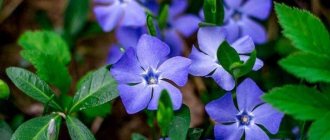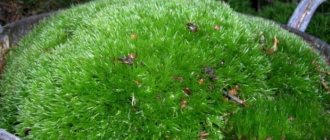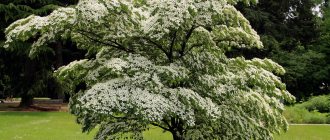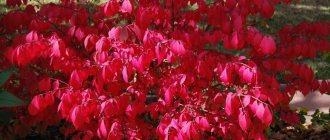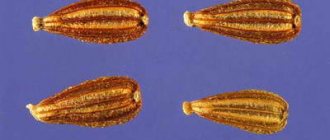Feather grass is a perennial herbaceous plant from the family Poaceae (or Poagrass), lives in zones with a temperate climate and dry, infertile soil - steppes, semi-steppes, and mountainous regions.
There are 80 species growing in Russia, and in total there are about 300 almost all over the world (Europe, North America, North Africa, Asia). The rhizome of the plant is short and non-creeping. The stems are straight, can grow up to 1 meter, the leaves of most species are rolled into a tube. The inflorescences are in the form of a panicle and the spikelets contain one flower covered with two scales. One of the scales turns into a long spine twisted around the ripening grain.
Inconspicuous feather grass flowers appear from May to July.
Description of the finest feather grass
Feather grass (other names: Mexican feather grass, Argentine needle grass, silky thread, cleaver) is a deciduous grass up to 60 cm high, forming a compact, vertical bunch of glossy, thread-like, silver-green or pale yellow-green, very mobile stems, crowned in summer with narrow, fluffy, 4–12 flowering panicles. They consist of 60 – 480 pale yellow or silvery whiskered spikelets, in which golden seeds ripen by the beginning of autumn. In areas with warm climates, feather grass grows as a perennial plant. In areas with cold winters it is an annual plant.
Care and reproduction
To grow beautiful feather grass, you need to have seed material. Feather grass is propagated by seeds, like any cereal. In the wild, the wind carries the grain long distances from the parent plant. This is facilitated by the feathery-pubescent networks in which it is hidden. They are picked up by the wind and carried several meters. They reach the ground a certain time after they land. After all, there is a lot of old grass and leaves around.
At night, under the influence of evening dew, the spiral-shaped knee swells, unfolds, and part of the spine is pressed to the ground. The grain is screwed into the soil. In the morning, the knee curls, the stem unbends, but the grain cannot rise up. She is prevented from doing this by the bristles, which cling to the soil like an arrow. It remains in the soil where it will germinate over time.
The most beautiful feather grass does not reproduce by self-sowing. Its seeds will not germinate near the mother plant. Doesn't like transplantation. It survives very poorly after it. It can grow in one place for up to 10 years.
Features of cultivation:
- Seeds germinate for 1-2 months. After the sprouts appear, they are immediately planted in a permanent place. Planting time is mid-May to late June.
- You can sow seeds in the ground before winter. But in severe frosts they may not germinate.
- Feather grass is sown in the driest area, where there is never flooding with groundwater. If there is no such area on the territory, you can arrange drainage and create a high ridge.
- The beautiful feather grass prefers gypsum or limestone soil. Therefore, when sowing, you need to add a little lime to ordinary garden soil. Humus and sand are added.
- It is necessary to moisten the soil in which the feather grass is sown only at the beginning, until it germinates. Then they are grown without watering. Excess moisture is harmful to feather grass. It reacts especially poorly to stagnant moisture near the roots. In this case, he dies.
Care consists of weeding out weeds that can choke the young plant. Later, when it grows, it is not afraid of weeds. Sometimes the soil around the plant is mulched. This is done rather to prevent the weeds from breaking through. There is no need to feed the beautiful feather grass. This can only be shown if the plant is damaged by pests. In late autumn, faded shoots are cut off, leaving leaves.
Most feather grasses can be grown from seeds and propagated vegetatively. Siberian feather grass mainly reproduces by dividing the rhizome. It is advisable to divide the clumps of feather grass and feather grass (Stipa capillata) in the spring, and only old bushes are suitable for propagation of the second species. Turfs of other varieties are successfully divided in August.
https://www.youtube.com/watch?v=Zzfpt1kkDv0
Feather grass plant
Features of the finest feather grass
The species adapts well to a wide range of conditions - heavy clay or sandy soil, moderate salinity, slightly acidic or alkaline pH, drought. Thrives in sunny areas in coastal areas with strong winds, but does not tolerate areas with poorly drained soils. In nature it reproduces by seeds. In culture, when the plants reach optimal density, they can be propagated by dividing the bushes.
In some states in the southwestern United States, northern Mexico, Argentina, Chile, and Australia, the plant is considered invasive and classified as a weed. However, when taken under control in a closed, fenced yard, feather grass does not pose a threat to the local ecology and landscape. It is resistant to pests and is not very popular with herbivores.
Feather grass on a personal plot
Wonderful, thin, pale yellow-green leaves topped with fluffy feathers of silver-green flowers, ripening to the color of wheat. This versatile broadleaf grass is ideal for a sunny gravel garden.
Feather grass will perfectly emphasize the long-term border between areas. It is ideal for the garden and recommended for introduction into a planting scheme. The feather grass's fluffy flower heads and foliage rise and sway charmingly at the slightest breath of wind.
The beneficial properties of feather grass, as well as the aesthetic value of this plant, make it a welcome guest in personal plots. Feather grass is often used to decorate flower beds and alpine slides.
Sometimes it acts as a background for the main elements of the composition. This plant also looks great if it is planted interspersed with other plants along garden paths.
Feather grass planting and care
Planting and replanting of feather grass begins in the fall. It is not recommended to carry out the transplantation procedure in the spring, since during this period the plant is actively accumulating strength for the flowering period. It is quite early in the feather grass.
Planting seeds in the spring also carries a certain risk: since it must be done at the very beginning of spring, in late April or early May, spring frosts can destroy the seeds before they germinate and take root.
If feather grass is already growing on the site and you just need to increase the planting area, or plant it somewhere else, the easiest way is to divide the adult bush into several parts. If this is the first planting and it is not possible to take a part of an adult plant from someone, the seed method is used.
You should choose the appropriate variety: they differ not only in decorative qualities, but also in winter hardiness. Seeds are sown to a depth of no more than 3 cm, three seeds per hole, this will ensure good germination in the event that the winter is not snowy enough or they are caught by frost during spring frosts.
The seedling method can also be used for growing feather grass. It is necessary to leave approximately 20 cm between individual bushes.
Feather grass does not require special soil fertility. On the contrary, in rich soils it may feel worse, since its weak root system has a hard time competing with other plants. It will also perform well on rocky or sandy soil.
However, feather grass does not like overly acidic soil and too high humidity. Therefore, it is useful to add a little lime to the soil before planting, and if the area is wet, groundwater is not far from its surface, it is necessary to take care of drainage.
But it tolerates drought quite well, since in nature it often grows in semi-deserts. It is advisable to plant feather grass in a sunny area.
Feather grass for decorative purposes
Despite its apparent modesty, feather grass can be used with great success in landscape design. The straw or silver color of feather grass plantings favorably sets off other ornamental plants, dividing the garden or flower garden into separate compositions.
You can use feather grass plantings to smooth out excessive decorativeness and give a corner of the garden a more natural look, reminiscent of a corner of wild nature. In addition, this is an unpretentious plant that does not require much care. Therefore, even a novice gardener can grow it.
The plant is rarely planted as individual bushes: feather grass looks much more impressive in a large mass. If desired, it can be placed in the center of the composition: many types of feather grass are decorative in themselves. To better understand what the final result will look like, you should take into account the external characteristics of a particular type, since different feather grasses can differ quite a lot.
Take into account the climatic characteristics of the species. Some of them are accustomed to warmer places. In our harsh winter, sprouts may die if they are not protected in a timely manner.
By planting it together with other flowers and grains, you can create a spectacular imitation of a flowering steppe in your own garden plot. The only difficulty can be the difference in soil preferences. While most plants love rich, refined and well-fertilized soil, feather grass prefers poor and rocky soil.
Feather grass in folk beliefs
Feather grass is most common in the steppes. That is why most of the superstitions associated with it came precisely from the steppe people - nomads and Cossacks. Such legends include the Cossack belief that feather grass is the grass of the dead. If you bring it into the house, someone in the family will die.
Oddly enough, you can trace the roots of this belief. Firstly, the time of flowering of feather grass is spring, this is the traditional time for the start of raids by warlike nomadic tribes. Therefore, we can say that the flowering feather grass brought grief.
Secondly, this plant has rather sharp spikelets. Grazing livestock could injure the tongue if they ate its shoots. After this, he could no longer eat normally and died. In addition, the feather grass that grew on the battlefields symbolized the graying hair of mothers who did not receive sons from the war.
Most popular varieties
Variety 'Ponytail'. An upright bush reaching 60 cm in height, with erect stems and thread-like leaves. Thick panicles visually really look like horse tails. Spikelets are single-flowered, large. Sand-colored inflorescences become “noble gray” as they mature. Combined with bluish-green leaves, the plants look mesmerizing when planted tightly together, responding to the slightest breeze. In some countries the variety 'Ponytail' is sold under the name 'Angel Hair'.
Variety 'Wind Whispers'. A rare, graceful perennial with thin, strong stems reaching 70 cm in height. It sways gracefully in the wind, and its silky, dense panicles with a purple tint glow brightly when they catch the sunlight. The leaves are hard, narrow, rough, with dense bristles.
Types of feather grass with photos
Today, about 300 species of feather grass are mentioned in the botanical literature, of which 100 species are distinguished by increased resistance to dry, hot climates. Let's look at the most common garden crops grown in our regions.
Feather grass (Stipa pennata)
The height of the grass arrows is approximately 30-100 cm. The surface of the stems is slightly pubescent. The leaves are narrow with pointed ends and curl into tubes. The leaf blades have a slight roughness.
The length of the inflorescences sometimes reaches 25 cm. Each contains 6-20 scaly spikelets. The scales are arranged in two rows. The brownish shoots are bent and have hairy pubescence closer to the top of the bush.
The species blooms at the end of May or June. After a month, the bushes begin to bear fruit with sharp, elongated grains. The plant grows well in loose soil with a neutral drainage environment. Excess moisture harms the grass and leads to inhibition of growth.
Beautiful feather grass (Stipa pulcherrima)
The grass is of medium length with numerous branches, pubescent at the lower part of the internodes. The leaves of the lower tier are narrow in shape with a dark green color, and the leaves of the upper tier are smooth to the touch.
The inflorescence racemes look like compressed panicles. Spikelets with a red tint grow no more than 30 cm in length and include only one flower. The surface of the spikelets is covered with a layer of hairs 3 mm wide.
This type of feather grass looks advantageous in group plantings inside an alpine hill. Individual flower beds with feather grass are mulched with crushed stone or expanded clay to hide the voids.
Flowering occurs at the end of May or June. Thanks to its attractiveness and decorative qualities, the plant fully lives up to its name. The grass successfully survives winters, even withstanding air temperatures dropping to -23°C. In nature, the most beautiful feather grass climbs onto rocks or mountain plains. The crop is planted on calcareous substrates, where the rhizome takes root well.
Since wild plantings are becoming less and less common, it was decided to include this type of cereal in the Red Book.
Feather grass (Stipa tenuissima)
Another perennial that can only occasionally be seen in our area. Strong stems reach a height of up to 70 cm. The leaf blades are rigid and rough. They have a narrow shape, like other representatives of the species. The size of the flowering panicles is about 20 cm. The panicles form spike-shaped arrows in purple tones. The main spine is bent, devoid of hair at the bottom, and, on the contrary, towards the top it is covered with short bristles.
The species blooms in the first ten days of summer. For planting, it is preferable to choose fertile black soil. Severe frosts are not harmful to grass and are easily tolerated.
Feather grass (Stipa capillata)
The culture is popularly called feather grass - a medium-sized plant with green thin longitudinal or flat leaves of a gray hue. The outer and inner sides of the plates are protected by hair. The internodes on the stems are completely inconspicuous.
The scales located at the bottom of the flower are small. Their edges also have hairs. The spine bends twice. In the lower part the spine is smooth to the touch, higher up it is overgrown with fluff. Warm steppes are one of the favorite places for feather grass to grow. Short spikelets bloom early in the season. In most regions this species is gradually disappearing.
Feather grass (Stipa magnifica Junge)
Bushes grown under normal conditions grow to a height of approximately 40 to 75 cm. In soils enriched with fertilizers, they can stretch another 15-20 cm. The leaves are twisted, no more than 7 mm wide. The flowers are framed by small hairy scales.
The main spine is usually bent once. Some varieties have peculiar “antennae”. The budding period is similar to other species. Self-sowing magnificent feather grass carpets the mountainous regions of Altai and the Urals. Even in the south, the grass takes root safely.
Applications and advantages of the finest feather grass
Feather grass is a popular decorative type of grass used in landscape and garden design. At the prestigious Chelsea Flower Show, which is held annually by the British Royal Horticultural Society (RHS) in the London suburb of Chelsea, feather grass is used in almost every display. Its advantages:
- grows quickly;
- Ideal for modern gravel and natural gardens;
- looks great in rockeries, mixborders and borders;
- can decorate any flower garden;
- Great for containers;
- blooms from the first year of planting;
- remains decorative for 9 - 10 months a year, therefore it has great potential to be an accent plant in the garden throughout this period;
- prevents active growth of weeds;
- brings airiness, movement and smart lightness to garden design;
- inspires and awakens the imagination of garden designers and amateurs to create unique, amazingly beautiful landscape and flower arrangements, including bouquets;
- maintenance efforts are low;
- drought-resistant, does not require additional fertilizing;
- practically immune to disease.
The plant perfectly coexists with other natural inhabitants of meadows and steppes: poppies, cornflowers, fescue, heathers, daisies and echinacea.
Looks stylish in combination with small-flowered and climbing roses, other ornamental shrubs, such as barberry, and small conifers.
Cut and dried feather grass stems can be a leading or additional leitmotif when creating floral arrangements of dried flowers, bringing harmony to them that is unsurpassed in its simplicity. It is not difficult to prepare them for these purposes. Feather grass is cut at the time of its active flowering and hung in small bundles with panicles down in a dark, cool, well-ventilated room.
Feather grass in the garden. Signs
Like many other plants, feather grass has its own halo of signs and beliefs. For example, it is generally accepted that this herb cannot be stored in the house, since it is also called widow’s grass, and if it is in someone’s home, he will become a widow. This belief is connected with the fact that in the distant past, the raids of nomads occurred precisely at the time when the feather grass was blooming, and people began to identify the spikelets of the feather grass with the hair of mothers and wives gray from sorrow.
However, there is also a belief that feather grass is a sacred plant of the spirits of the steppes, and if a person hides a bunch of feather grass under his shirt, the spirits of the steppe will take him under their protection and cleanse him of past adversities.
This means that it is better not to place feather grass in the house, but it is quite possible to grow it in the garden!
Interesting things about feather grass
- The paniculate stem of living and dry feather grass can serve as a kind of natural and home barometer. Brushes from awns - sharp thin processes in the spikelet, coming from the seeds, are very hygroscopic and sensitive to changes in air humidity. They curl into spirals in clear weather, and straighten before rain.
- In folk medicine, decoctions and infusions of feather grass leaves and awns are used to treat paralysis caused by stroke, thyroid diseases, prostate adenoma, and rheumatism. But you need to strictly follow the dosage of preparing and taking drugs, as you can get poisoned.
- In some cases, feather grass is popularly called “widow’s grass”, in others – “protector grass”. This is connected with the history of our region, when bloody battles with nomadic tribes unfolded on its steppe expanses, during which our warrior-defenders died.
- Various superstitions are also associated with feather grass. It is believed that if an armful of feather grass is brought into a house, this can bring misfortune to the family living in it.
- Young feather grass is suitable as food for animals. However, during flowering it becomes poisonous to sheep and goats. In late summer, horses and cows that are grazed in areas where feather grass grows may develop “feather grass disease.” Ripe plant awns cut their points into the throats of animals, causing inflammatory processes in them that are difficult to treat, and can even lead to death.
- Biologists claim that feather grasses save steppe soils from destruction (erosion) caused by the wind and contribute to the formation of black soil in it.
- Fibers of some types of feather grass, in particular S. tenacissima, used for weaving cords, bags, baskets, fashionable light summer shoes (espadrilles), making thin, high-quality paper for rolling cigarettes and for book production.
Types and varieties
Previously, botanists identified only a few species:
- Feather grass is feathery. The plant is recognizable by its long white “feathers” visible from afar. Latin name – Stipa pennata.
- Lessing's feather grass produces small sods. In addition, it is much smaller than the first type.
- Tyrsa.
Instead of "feathers" it has hair-like awns. Feather grass of Lessing
Today another classification has appeared. It turns out that feather feather grass is divided into many species. The differences between them are insignificant, but still there.
- Zalessky feather grass. Its ears are edged with a tongue similar to a panicle. It is a xerophyte, meaning it can easily withstand dry climates and extreme heat. You can meet it in western China and some regions of Russia. It was discovered by the Soviet botanist D. Vilensky.
- Feather grass angustifolia has bare stems. Easily trampled, grows in Asia Minor and the Mediterranean.
Also used for decorative purposes are feather grass and feather grass, hairy-leaved feather grass and Fireworks. The plot or flowerbed will immediately be transformed!
Habitat
Feather grass grows in many countries. These are mainly temperate latitudes (Western Europe, from the Middle Urals to Transbaikalia, central Russia). But in the southern regions it can also be found in the steppe and forest-steppe zones, in semi-deserts (Northern African countries, the Gobi Desert, Caspian regions). Selects open hills, rocks, dry meadows, rocky places under rocks. The type of feather grass depends on the region of growth. The plant is very popular in landscape design and is widely used in flower arrangements and borders.
Types of landscape feather grasses for central Russia
What winter-hardy varieties can lovers of modest exotics buy in the middle climate zone?
For example, in the Moscow region, when decorating territories, preference is given to several types of this cereal:
- Feather grass is popular in gardens and flower beds for a reason. This original inhabitant of the Russian steppes is accustomed to all climatic vagaries. Does not require shelter for the winter.
- The beautiful feather grass is similar in appearance to its feathery counterpart.
- The compact bush is called “Fluffy Cloud” due to its lush shape.
- The finest feather grass, growing in Mexico, is demanding on temperature conditions: in winter no lower than 15°C, in summer no more than 25°. “Capricula” is grown as an annual.
- "Fireworks" is unique in that it changes the color palette of its leaves, turning into rich greens, gold, pink, red and completely brown depending on the season.
- Zalessky's feather grass feels good on salt licks.
- “Hairy” looks like horsehair with a silvery and greenish tint.
- Lessing's feather grass is unique due to its unusually curled leaves when dry and a panicle with a purple tint.
Traditional medicine recipes
The main thing in the preparation of medicines based on feather grass is compliance with the proportions and use strictly in accordance with the dosage of the resulting drug.
- Tincture for tumor-like enlargement of the thyroid gland (goiter). Add 1 tbsp to a glass of boiled milk. l. dry crushed feather grass. Boil for about 5 minutes and leave for 30 minutes. Take a few sips (2-3) before meals 3 times a day. You can also make lotions from this decoction on the area where the thyroid gland is located.
- Prostate adenoma. If you are ill, you can prepare a sitz bath with herbs: feather grass (preferably feathery) and horsetail. Mix the plants in a 1:1 ratio. Pour three handfuls of the resulting mixture into 2 liters of boiled water. Leave for about 50-60 minutes and filter. Take a bath before bed, wrapping yourself in a blanket or warm blanket. It is advisable to do an enema before the procedure.
- Paralysis. For a glass of milk brought to a boil, take 1 tbsp. l. raw materials. Boil for 15 minutes and let sit for an hour. Take in small sips before meals 3 times a day. For paralysis, you can also use a herbal mixture that includes feather grass and Echinops. In this case, the Echinops will enhance the effects of the feather grass. Chopped dried herbs, take 1 tbsp. (1:1), add to a thermos and pour a glass of boiling water over them. Leave for 12 hours. Strain the finished infusion and drink throughout the day.
- Radiculitis and multiple sclerosis. Use 1 tsp. mixtures of feather grass and Echinops seeds. Place in a dark container and add 100 ml of alcohol. Leave in a dark place for 3 weeks. Strain and take 1 tsp orally. 2 times a day 60-90 minutes after meals. For severe radiculitis, rub into affected areas.
- Rheumatism and joint pain. In this case, you can use separately harvested seeds. 1 tsp crushed seeds pour 100 ml of alcohol. Leave in a dark place for 7 days. Take orally an hour after meals 2 times a day (1 tsp). If you feel pain, you can lubricate the affected areas with the product. Another remedy for these ailments is a decoction of milk or water. Boil the dry raw material until it swells and leave to brew for about 20-30 minutes. When warm, apply to the sore spot for 30 minutes, wrap with a cloth to maintain heat.
Pennisetum (pinnate bristleweed), or “fountain grass”
Pennisetum surprises with fluffy brush inflorescences, the structural shape of the bush and elegant foliage. foxtail pennisetum (Pennisetum alopecuroide) and oriental pennisetum (Pennisetum orientale) are best suited for growing in the middle zone
Pennisetum alopecuroide. © garten-schlueter
These varieties have fairly high winter hardiness (withstand negative temperatures of about -29 degrees), so they can be cultivated in a perennial crop and overwinter well in flower beds under light cover.
Growing pennisetum from seeds is not difficult. If you plan to use it as a perennial garden plant, the seeds can be sown directly into the ground in May. But to decorate balconies, I prefer to grow pennisetum early - through seedlings.
The seeds of the cereal are quite large, but it is still better not to sprinkle them with soil, but to gently press them into the substrate with a toothpick. Shoots usually do not keep you waiting and appear in 7-10 days.
If you sow pennisetum at the end of winter, you can see flowering already in the year of sowing. Of course, in the first year it will not be so abundant and will begin only in mid-September. But, nevertheless, the original bristly “brush brushes” will be a wonderful decoration for autumn container compositions.
Pennisetum is a fairly tall grass, so it can be used as the central accent of a tub composition. At the foot of the ornamental grass, marigolds, dwarf zinnias, low-growing dahlias, petunias and other bushy annuals with large expressive flowers will look harmonious.
In the fall, it is better to transplant the bushes into open ground. In order for the wintering of pennisetum in the garden to be successful, it is recommended to tie the stems into bunches, cover them with peat and cover them with spruce branches.
The colorful pennisetum glaucosa , also known as ornamental or pearl millet, with purple leaves and monumental burgundy inflorescences, is also easy to grow from seeds. However, you should know that this is one of the most heat-loving species of pennisetum, and the plant will delight the grower for only one season.
Haretail, or Lagurus
Charming “bunny tails” are difficult to confuse with any other representative of cereals. The main advantage of the plant is its unusual dense ovoid inflorescences, 3-4 centimeters long, blooming on long thin stems. At the beginning of flowering, the spikelets are pinkish-gray, and later change color to pure white. Florists often use such original inflorescences for winter bouquets.
Haretail, or Lagurus (Lagurus ovatus). © forumhouse
Most often, lagurus is grown exclusively as a dried flower, but the fashion for natural flower beds has made it possible to see the haretail as a full-fledged participant in mixborders and container compositions. The height of the plants is 30-50 centimeters, while the bushes practically do not grow in width, therefore, to achieve the greatest effect in flower beds, the haretail is planted in large masses, placing the plants in a group at a distance of 10-15 centimeters from each other.
By nature, lagurus is a fast-growing annual, so the seeds can be sown directly into the ground in early May. But I prefer to sow them as seedlings indoors at the end of March or beginning of April, so that the charming “bunny tails” will appear in July.
Seed germination takes 10-12 days; seedlings do not require special care. The haretail prefers sunny places, poor soils, and moderate watering, and, if necessary, tolerates drought well.
In container flower beds, the haretail will become a vertical accent of the composition. If you place it in the center of the container, surrounded by bright annual flowers (petunia, evergreen begonia, low-growing snapdragon, marigolds, etc.), the branched bushes will hide the unattractive foliage of the lagurus, and the bright inflorescences will form an expressive contrast with the fluffy light spikelets.
Hairy sedge (Carex comans)
The hybrid Amazon Mist sedge is one of the smallest grasses (no taller than 20 centimeters) that can be successfully used to decorate the edges of plant pots and hanging baskets, as it has characteristic slightly drooping crescent-shaped leaves.
Hairy sedge (Carex comans). © Lyudmila Svetlitskaya
The textured, narrow foliage of whip sedge is light green in color and is quite hard to the touch, which is why from a distance (unknowingly) the plants can be mistaken for artificial grass.
Amazon Mist sedge is especially impressive in windy weather, due to the fact that the reverse side of the foliage is silvery in color. It creates a characteristic shimmering effect in the wind.
The name of this cereal is familiar to everyone who spent summers in the countryside as a child, and it seems that the hybrid variety should also be resistant like the famous weed. But, alas, hairy sedge is a heat-loving variety of common grass native to New Zealand and does not tolerate temperatures below -23 degrees.
Sedge blooms at the end of summer with inconspicuous spikelets, but flowering, in any case, occurs only in the second year when grown in the southern regions. When young, sedge grown from seeds grows rather slowly, so it is best to sow in mid-to-late winter.
Seed germination takes about a week, during which time it is better to keep the containers on a well-lit windowsill or under a fluorescent lamp. Once planted in its permanent location, this original ornamental grass requires minimal care if placed in a sunny location and provided with regular watering. In some cases, it is necessary to remove individual browned leaves from clumps, but such a problem occurs extremely rarely.
Amazon Mist sedge grows in low, neat tussocks, so it is better to choose low, compact annuals with medium-sized flowers as partners. I liked combining it with hybrid nemesia, bacopa, mimulus, viola, calibrachoa, dwarf snapdragon, etc.
There are other equally interesting varieties of sedge. For example, the Red Rooster has attractive red-bronze foliage. And the Bronco is distinguished by textured clumps of bronze-brown color. Both hybrids are also poorly winter-hardy and are grown in the middle zone as annuals.

